The Fast Foamer Difference: How an Unconventional Cleaning Restored a Flotex Floor
The staff at a local north Georgia pediatric medical office was unhappy with the dingy, soiled look of their Flotex flooring and sought professional assistance to restore its appearance.
If you’re unfamiliar with Flotex, it’s a flocked, waterproof resilient sheet flooring with the additional benefits of a textile – softer under foot, improved acoustics, and slip resistance.
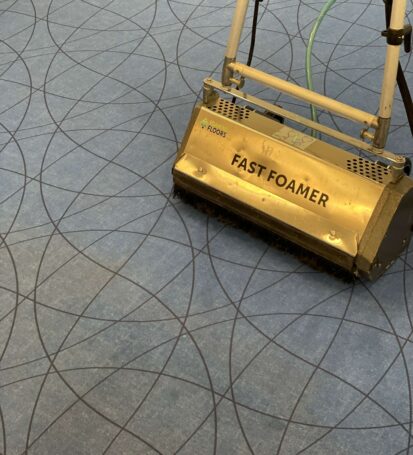
Initial Assessment
I was called in by the Forbo sales rep along with the commercial flooring contractor handling this account after another floor care professional’s attempts to clean the floor only seemed to make the problem worse. That particular service provider seemed to be either cleaning improperly or was simply in over their head when cleaning this product. Based on my initial assessment, I believed that the soiling issue was being caused by:
- a lack of scheduled daily and weekly vacuuming and spotting (allowing soil to build up), and
- improper cleaning and maintenance procedures (both interim and restorative)
After a discussion with the Forbo Sales Rep and flooring contractor, I laid out a plan to restore the Flotex’s appearance.
Manufacturer Recommendations
In previous manufacturer recommendations, floor care service providers were encouraged to treat Flotex as a resilient sheet flooring (apart from including vacuuming in lieu of traditional mop & bucket wet mopping). Rotary machine agitation and auto-scrubbing were suggested. However, the recommendations have been updated over time to currently include using a Counter Rotating Brush machine (CRB) for the best agitation, and suggest extraction with a self-contained 3 in 1 (water extractor with a CRB) or box extractor and wand.
I always try to adhere to the manufacturer’s recommendations (except for doing it better – within reason) but in this case, the floor had been severely neglected and typical cleaning procedures weren’t going to produce the results expected from an appropriate cleaning.

Benefits of the Fast Foamer System
Instead of treating the Flotex like resilient sheet flooring, I decided to clean it like a textile. I could have used hot water extraction, but I’ve had a ton of success using the Fast Foamer System with High Energy Foam on textile floors, mainly commercial carpet loop pile.
The Fast Foamer is an innovative commercial carpet cleaning system, capable of restorative cleaning at the speed of interim maintenance. It uses a tethered CRB to apply a dense, very dry High Energy Foam directly to the textile flooring. After the desired amount of foam is applied to the floor, proper dwell time is allowed, and then re-agitation is done as needed. I chose to use it on this job for the following reasons:
- Flotex nap is dense, and depending on the level of soiling and amount of moisture, it can easily wick within minutes even when using large down force air movers. See more about this below.
- With increased fear during the pandemic, disinfectants were used excessively leading to overspray falling on the floor. Some of these disinfectant products have a positive charge that’s designed to kill bacteria, viruses, and fungus. However, it can cause them to adhere to the fiber with a strong bond that can’t be broken with a genera purpose neutral cleaner (pH between 8.5-9.5) and even beyond. It typically takes a specialty chemistry, like XL North’s Charge Away or Prochem’s Filter Out to break these bonds and must be water extracted. However, High Energy Foam has high surface tension, advanced polymers, and surfactants, that work on a molecular level to break the bond and release the soil.
- The office administrator in charge of facility contracts believes that quarterly cleaning and maintenance is excessive, so I needed to provide a solution that offered a notable, long-term improvement in appearance.
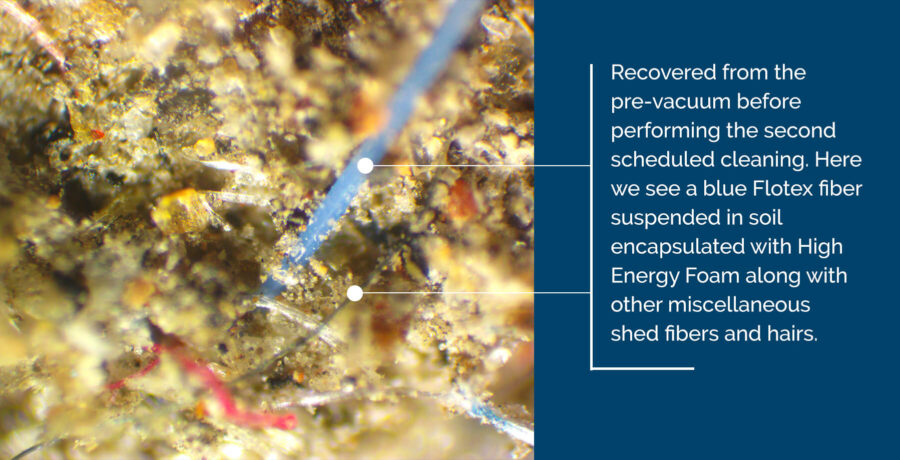
High Energy Foam Advantages
Besides the Fast Foamer System being a very effective cleaning and restorative system, High Energy Foam has its own advantages, including:
- HEF is an encapsulating preconditioner. It rivals a conventional preconditioner with only a pH of 8.5. The special polymers left behind increase the cleaning power while still wet and encapsulate any miniscule residual soil that may remain in the Flotex during the drying process. This allows for the soil to be easily removed with subsequent vacuuming.
- Another advantage of the HEF polymer is the encapsulated soil becomes inert and is unlikely to damage the fiber. It also helps resist soil from getting to and attaching directly to the fiber.
- HEF contains a second polymer that acts as an acid dye blocker and an anti-soil agent. It helps replenish any natural or applied factory protectant that may have diminished through wear and age.
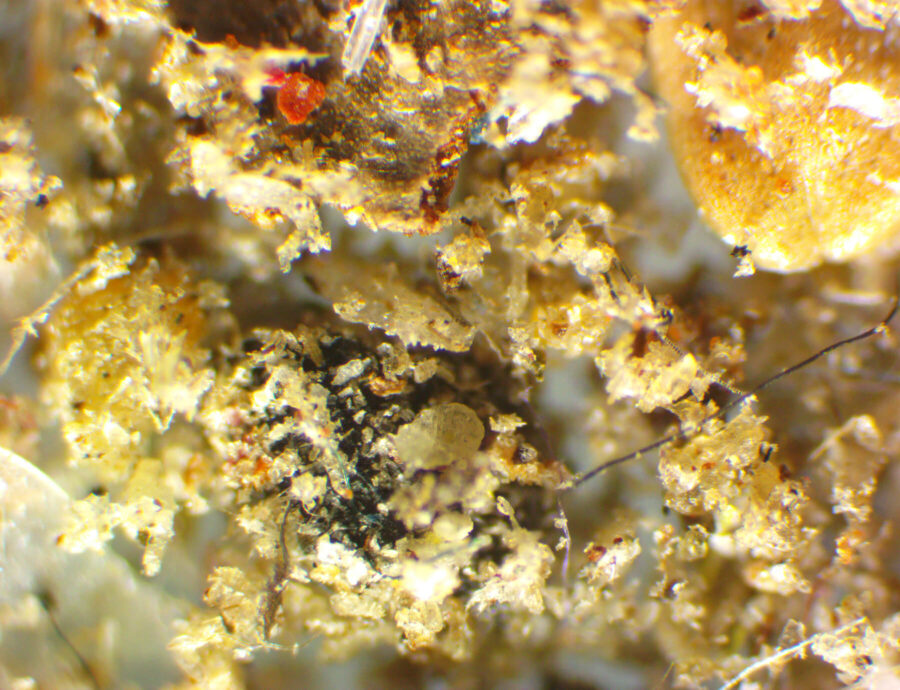
The Process
During the initial cleaning, the combination of the Flotex’s short nap along with the extremely over soiled condition of the floor created a situation where wicking was occurring within a few minutes of cleaning an area. I made adjustments (creating a dryer foam and keeping the down force fan closer to the area I was working in), and the wicking issue was significantly reduced. After a second scheduled maintenance cleaning, the Flotex was restored. Because of the success of this job, I’ve acquired two additional locations.
It’s important to note that softer CRB brushes work better on this type of flooring, specifically .23 denier or below. I used a .17 denier brush on this job.
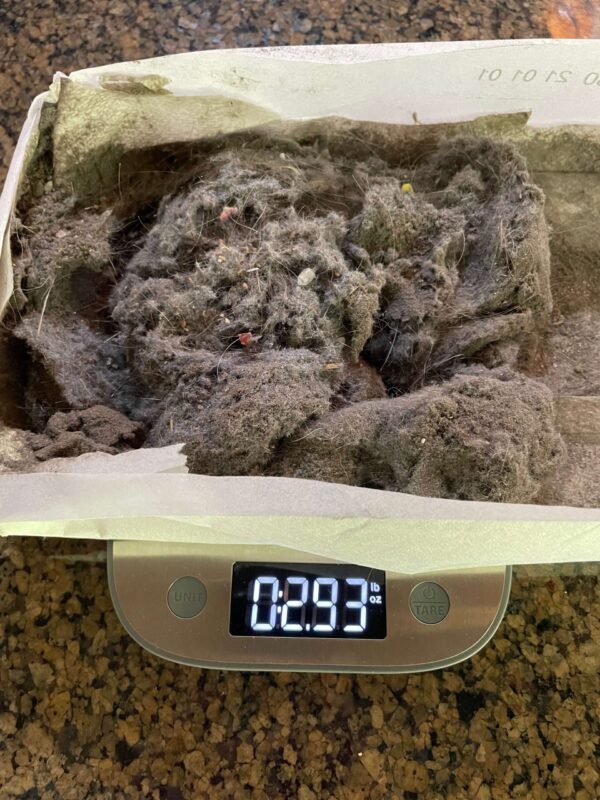
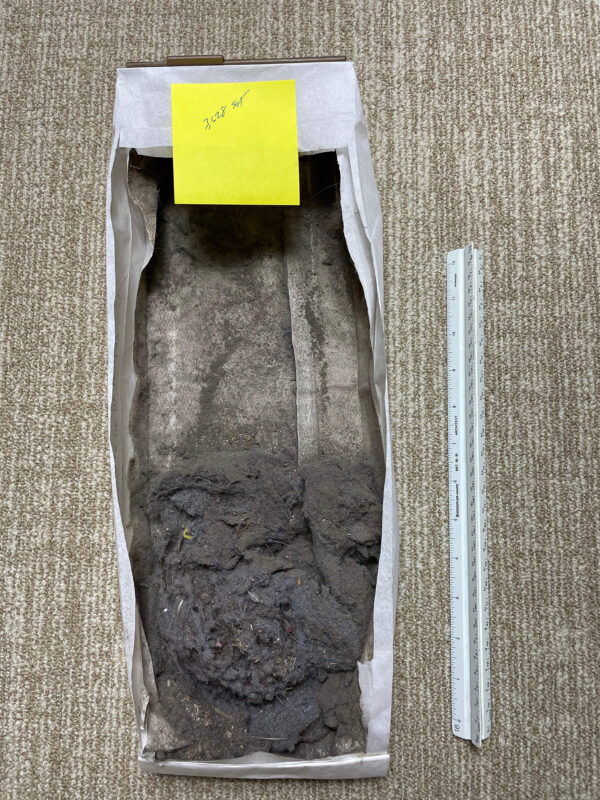
Pre-vacuuming was performed on the second scheduled visit before the cleaning. Based on the volume of soil collected in the vacuum bag, daily and/or weekly vacuuming was not being performed consistently and was one of the contributing factors to the floor’s dirty appearance.
The Outcome
The most challenging aspect of this project is the lack of cleaning and maintenance, especially when it comes to the office administrator not wanting to adhere to quarterly (at minimum) floor care visits. With this perspective, it could be difficult to keep the Flotex clean to the customer’s expectations. Quite simply, the better it looks, the less they want to have it cleaned and maintained. This is yet another reason why using the Fast Foamer System with High Energy Foam is an ideal solution. The benefits of High Energy Foam extend beyond six months. Even if the customer limits cleaning visits to two to three times per year (which is unrealistic for the environment), HEF is a no brainer for providing the Flotex with exceptional soiling resistance and protection.
As with any commercial floor care job, it’s important to rely on the principles of cleaning. On this project, the heavy soil load was a challenge so understanding soil suspension and dry soil removal was key. The IICRC R100 Reference for Professional Cleaning of Textile Floor Coverings and the ANSI/IICRC S100 Standard for Professional Cleaning of Textile Floor Coverings are excellent resources for architects, designers, installers, service providers, and end users of commercial floors.
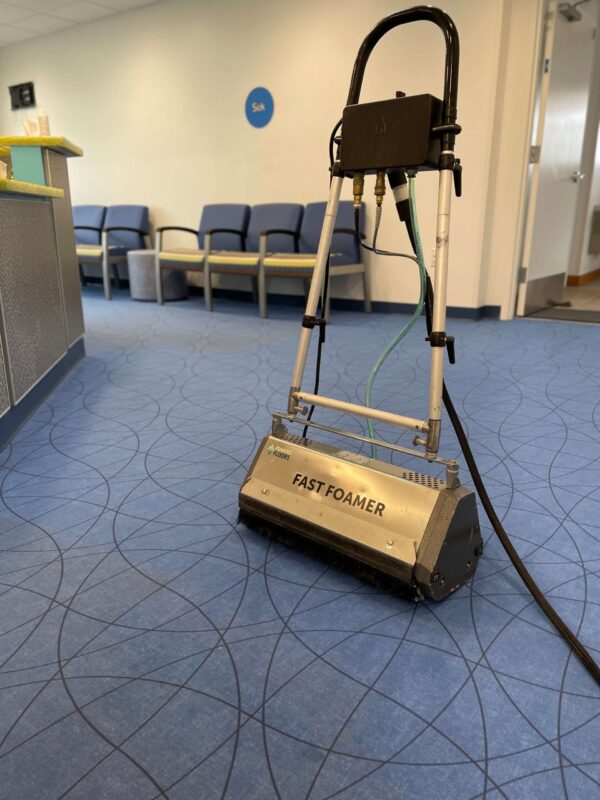

Steve Brown, owner of Infinite Floorcare in Atlanta, has worked alongside and been educated by some of the best in the flooring industry. His dedication to his craft is apparent in his commitment to providing Infinite’s customers with the most highly trained technicians, innovative technology, and effective solutions for cleaning and maintaining the floors in commercial spaces and facilities.
As a member of the XL North Tactical Group, Steve lends support and education to floorcare providers throughout the country who rely on his expertise to solve unusual or complicated flooring issues. Additionally, he has served on Technical Advisory Committees responsible for revising and updating the IICRC’s RFMT (Resilient Flooring Maintenance Technician) and CCMT (Commercial Carpet Maintenance Technician) courses and certification exams.


